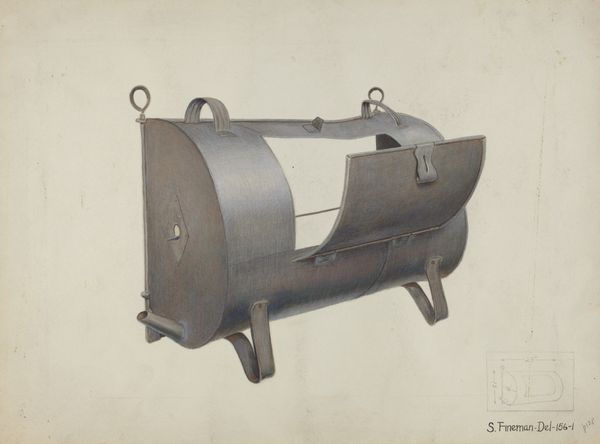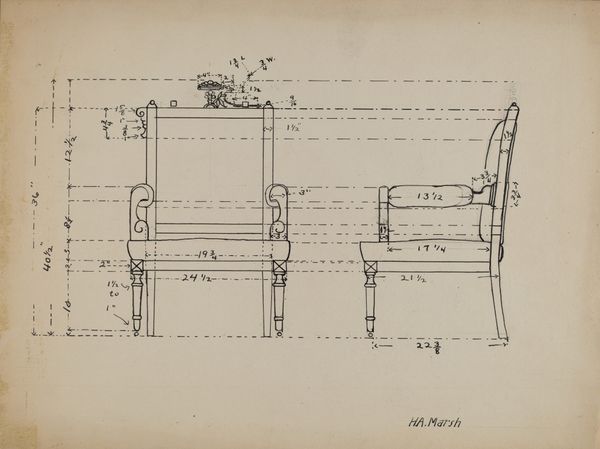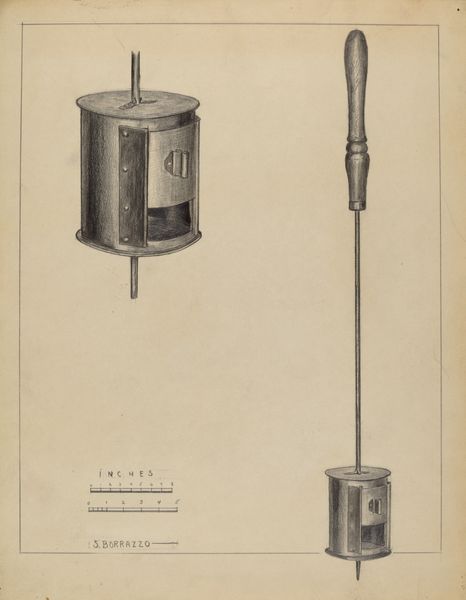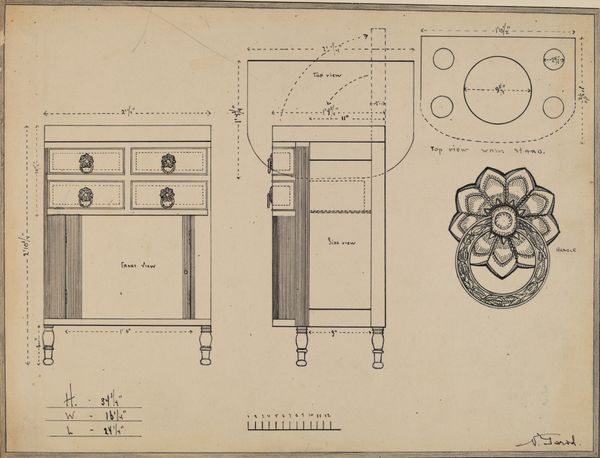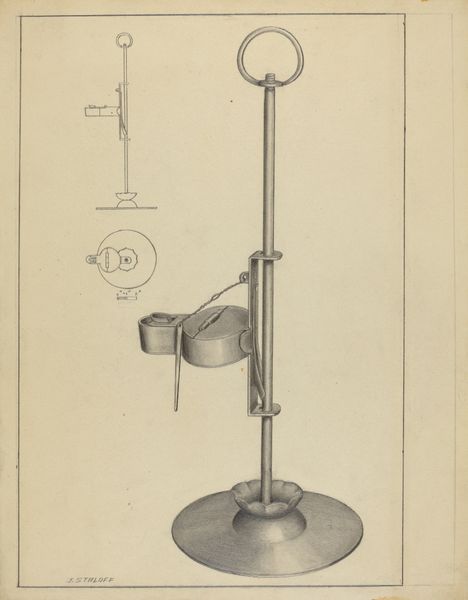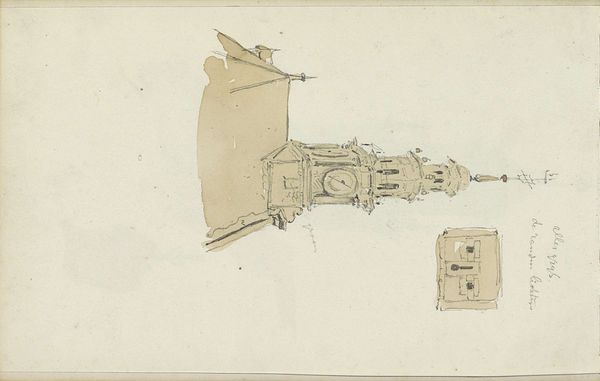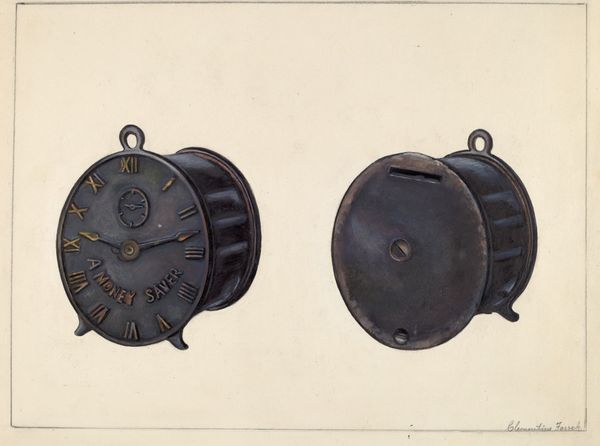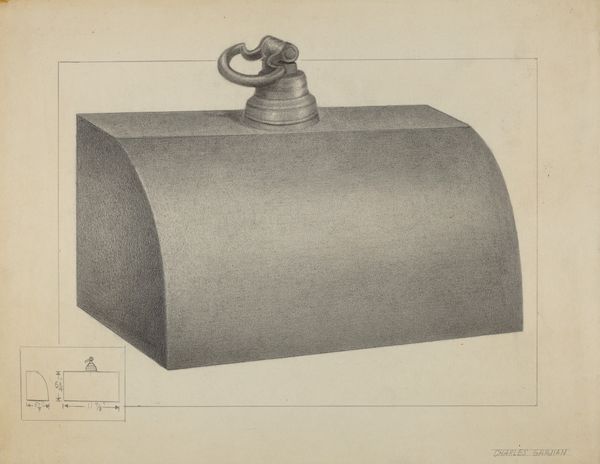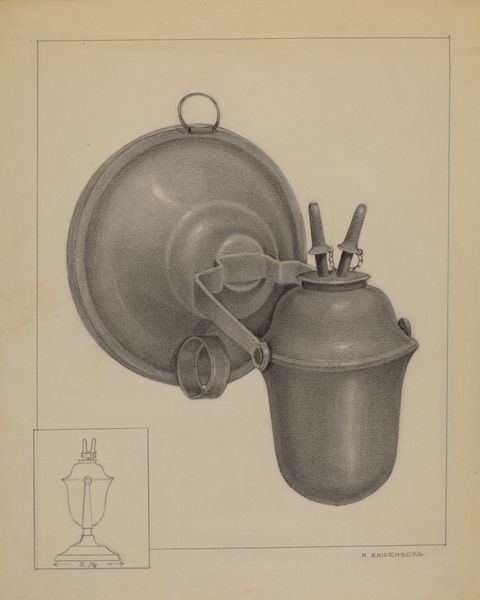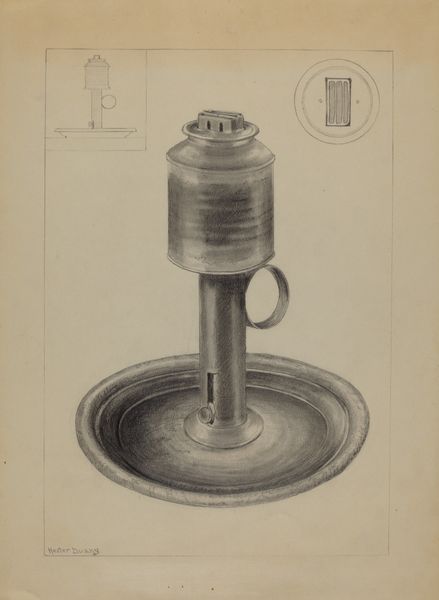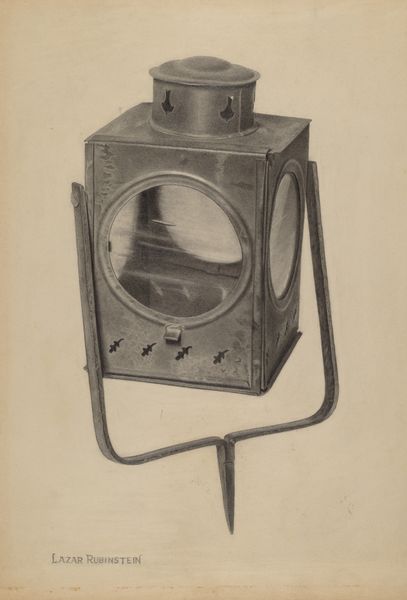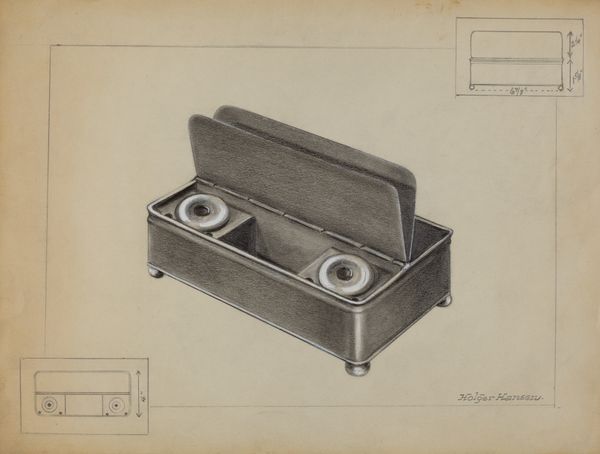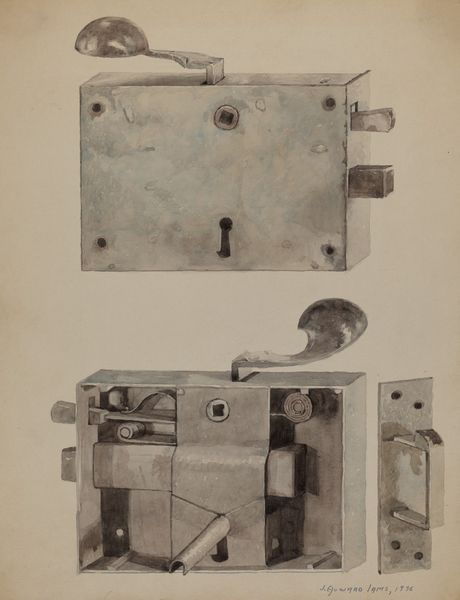
drawing, pencil
#
pencil drawn
#
drawing
#
aged paper
#
toned paper
#
light pencil work
#
pencil sketch
#
old engraving style
#
sketch book
#
personal sketchbook
#
geometric
#
pencil
#
sketchbook drawing
#
heavy shading
Dimensions: overall: 22.8 x 29.6 cm (9 x 11 5/8 in.)
Copyright: National Gallery of Art: CC0 1.0
Editor: So, this is Holger Hansen's "Dutch Oven" from around 1936, a pencil drawing. There's a sort of…industrial coolness to it. A technical drawing but with the softness of pencil. It reminds me of something from a Jules Verne novel. What grabs you when you look at this drawing? Curator: You know, I think you've nailed it. There is an anticipatory futurism there. The artist captured the utilitarian object, but somehow also infused it with this yearning, this…'what if?' that so defined the era. For me it evokes that moment just before technology completely changes the human experience, and maybe not always for the better. The heavy shading hints at the weight of expectation, both literally and figuratively. What do you make of the supplemental schematics? Editor: They make it feel even more mechanical and planned, and I'm trying to imagine what those plans looked like outside of this rendering. Is it commentary about human intent, maybe? Curator: Interesting thought! Perhaps it's about control – the ability to design, to build, to literally shape our world. Yet, isn't there also a feeling of…sterility? Of the artistic hand distanced from its subject through process? Almost like an assembly line for the eye, churning out perfectly rendered dreams of pots. I find that contrast pretty powerful. It poses interesting questions. Editor: Yes, the way we are trying to perfect function but taking away our initial creativity, in some cases. I really like how it uses something as humble as a dutch oven to address technology and the role of planning in shaping our world, our intentions. Curator: Exactly! And to think, all this from a simple drawing! It reminds us that art, even in the most unassuming forms, can reflect the complex and wonderful dance between humanity and technology. What a delicious paradox!
Comments
No comments
Be the first to comment and join the conversation on the ultimate creative platform.
